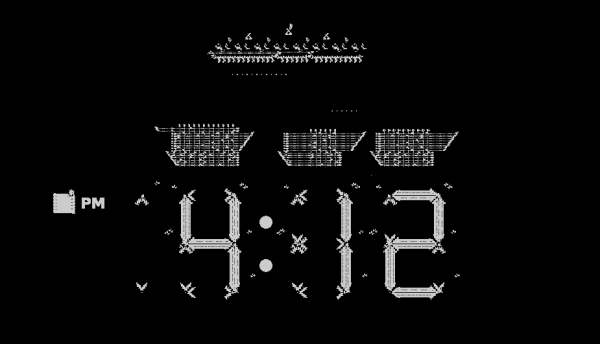Conway’s life has to be the most enduring zero-player computer game in history. Four simple cellular automaton rules have been used to create amazing simulations since the 1970’s. The latest is an entire digital clock implemented in life. StackExchange user [dim] created this simulation in response to a challenge from [Joe Z]. We have to admit that we didn’t believe it at first, but you can run it yourself by importing [dim’s] gist to the online Javascript Conway’s Life Simulator. To say this is impressive would be an understatement. We don’t know exactly how long it took [dim] to build this clock, but the challenge has been around since August of 2016.
[Dim] does a pretty good job of describing exactly how the clock works. The timebase is at the top. Below it is clock distribution and counters. After that come counters, latches, and lookup tables. Data moves around the clock in the form of gliders. P30 (aka Queen Bee) gliders to be exact. It might make things simpler to think of the glider paths as circuit traces, and the gliders themselves as clock pulses.
We couldn’t get over all the little details in this design. If you zoom way in, you can see all the lookup table patterns have been annotated, much in the way a schematic would be. For [Dim’s] next feat, we hope he takes on [Joe Z’s] Tetris challenge!
Conway’s life is like honey for hackers. We’ve seen it running on our own Hackaday Badge. We’ve even seen clocks that run the game on their display. Someone needs to implement a clock that runs the game that runs this clock. Clockception, anyone?











